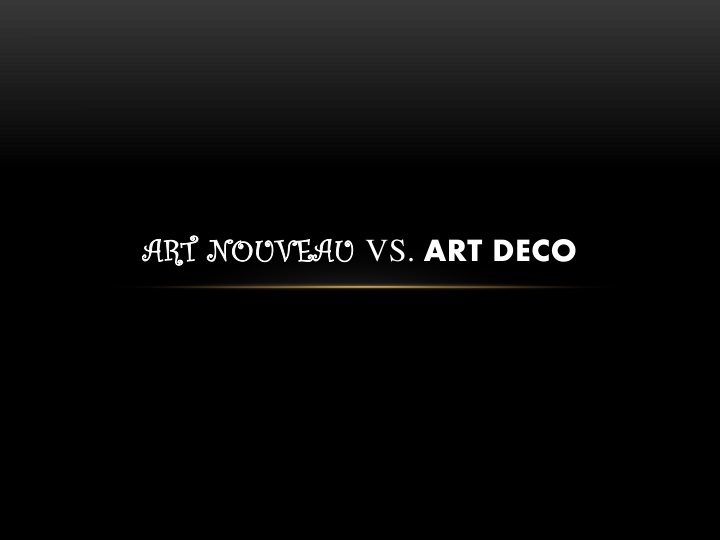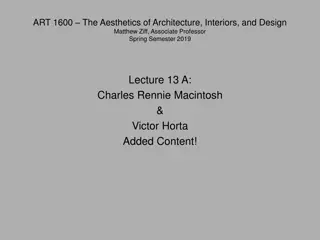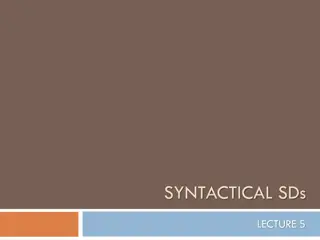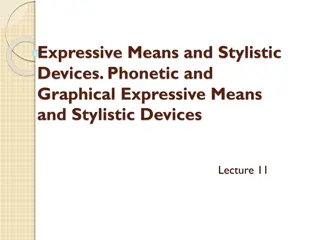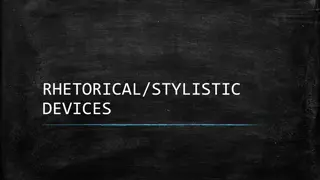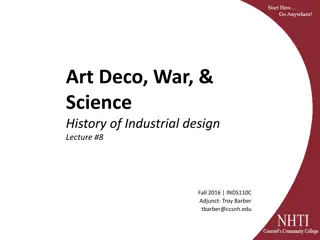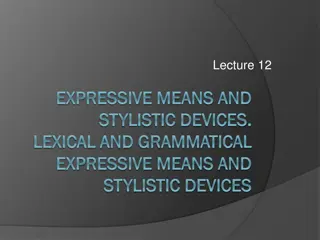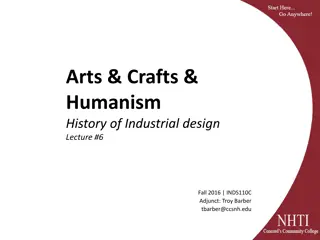Art Nouveau vs. Art Deco: A Stylistic Evolution in Design
Art Nouveau, a style prevalent from 1890 to 1914, featured intricate, flowing designs inspired by nature and a reaction to industrialization. Conversely, Art Deco, emerging in the 1920s, embraced modernism with streamlined, geometric motifs symbolizing luxury and technological progress. The transition from Art Nouveau to Art Deco signified a shift from elaborate, organic forms to sleek, industrial aesthetics reflecting the changing societal and political landscapes of their respective eras.
Download Presentation

Please find below an Image/Link to download the presentation.
The content on the website is provided AS IS for your information and personal use only. It may not be sold, licensed, or shared on other websites without obtaining consent from the author.If you encounter any issues during the download, it is possible that the publisher has removed the file from their server.
You are allowed to download the files provided on this website for personal or commercial use, subject to the condition that they are used lawfully. All files are the property of their respective owners.
The content on the website is provided AS IS for your information and personal use only. It may not be sold, licensed, or shared on other websites without obtaining consent from the author.
E N D
Presentation Transcript
ART NOUVEAU ART NOUVEAU VS. ART DECO
ART NOUVEAU ART NOUVEAU (1890-1914) an international style of art, architecture and design that peaked in popularity at the turn of the 20th century How would you describe this piece?
Art Nouveau is characterized by highly-stylized, flowing, curvilinear designs often incorporating floral and other plant-inspired motifs.
This was a reaction to the quickly growing world of industrialization and all of the simplification and hard edges that came with this new machine age. Prominent American craftsmen include William Henry Grueby, Artus Van Briggle, Louis Comfort Tiffany and George Ohr.
Art Nouveau, the style that preceded Art Deco, fell out of fashion in the years before World War I (1914 18). In the increasingly conservative political climate, critics saw it as decadent and over-elaborate. It failed to meet the demand for a modern national style.
The term Art Deco, coined in the 1960s, refers to a style that spanned the boom of the roaring 1920s and the bust of the Depression-ridden 1930s. Art Deco represented many things for many people. It was the style of the flapper girl and the factory, the luxury ocean liner and the skyscraper, the fantasy world of Hollywood and the real world of the Harlem Renaissance. Art Deco affected all forms of design, from the fine and decorative arts to fashion, film, photography, transport and product design. It was modern and it was everywhere.
Art Deco displays streamlined, rectilinear modernism that was cheaper and thought to be more faithful to the rough, plain, industrial aesthetic
During its heyday, Art Deco represented luxury, glamour, exuberance, and faith in social and technological progress. One of its major attributes is an embrace of technology.
Historian Bevis Hillier defined Art Deco as "an assertively modern style that ran to symmetry rather than asymmetry, and to the rectilinear rather than the curvilinear; it responded to the demands of the machine and of new material and the requirements of mass production".
Which style can you identify with? Are you the curvy, flowing, asymmetrical type, or more of the hard edge, symmetrical, industrial type? Your next mission is to design and create a piece that is strongly influenced by either Art Nouveau or Art Deco with a foot or base that serves as a major focal point. Your finished piece needs to be a minimum of 8 in either direction. You decide the clay and method of construction, based on what is best for your design. Develop 5 sketches that can be completely new ideas or variations on a theme. When you have 5, select the one you love the most and draw it FULL SIZE, complete with plans for surface decoration. (25 pts)
